
Comment assurer la sécurité de votre chien lorsque vous utilisez des escaliers pour voitures ?
Ensuring the safety and security of your dog while using stairs for cars is paramount. Just like humans, dogs can be prone to accidents and
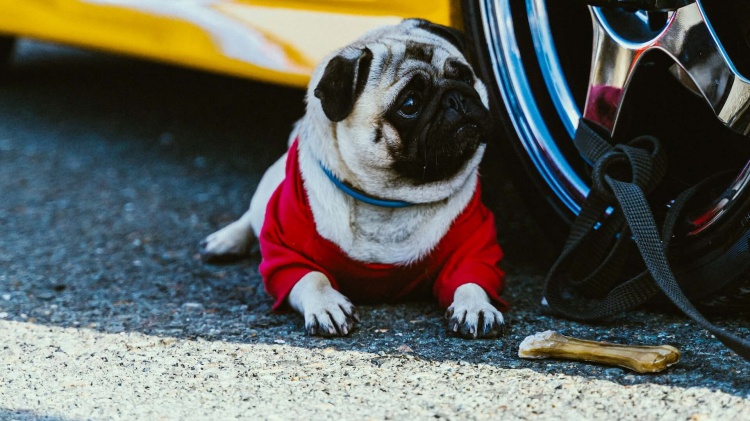
When it comes to ensuring the safety and comfort of your furry friend during car rides, dog stairs can be an invaluable tool. They provide a convenient and accessible way for your pet to enter and exit the vehicle, reducing the risk of injuries and strain on their joints and muscles.
However, as with any pet accessory, there are common risks and mistakes that pet owners should be aware of to ensure the optimal use of dog stairs for cars. In this guide, we will explore the potential pitfalls and how to avoid them, ensuring that your pet has a positive experience with their new stairs.
From selecting the right size and type of stairs for your pet’s needs to proper training and maintenance, we will cover all the essential aspects to consider. Our goal is to provide you with the knowledge and insights needed to make informed decisions that prioritize the well-being and safety of your pet.
So, let’s dive in and discover the best practices for using dog stairs for cars, and how to avoid common risks and mistakes that could compromise your pet’s safety and comfort.
The ground or surface beneath the stairs is a major risk factor.
Avoid using stairs on wet, icy or polished slippery ground. Dogs can lose their footing exiting the stairs and fall or slide into traffic.
Loose materials like dirt, sand or gravel can shift under the stairs, causing them to sink, tilt or wobble. Stair movement during use causes dogs to fall.
Positioning stairs on a sloped driveway or hill creates the risk of sliding or tipping over sideways. Always use stairs on flat-level ground.
Make sure the grass below is mowed. Long blades can wrap around steps creating a tripping hazard. Tangles can also jam moving stair parts.
Always set stairs up on level, hard, and non-slip surfaces for maximum stability and traction. Check the area thoroughly.
Proper placement of the stairs is critical to avoid hazards.
Any gap between the stairs and the vehicle can lead to serious injuries as paws or legs fall through getting in or out. Push stairs flush against the vehicle.
The stairs should be positioned at a 90-degree angle to the door, not a narrow parallel angle. Parallel positioning causes dogs to have to turn sideways and slip.
Unsecured, unanchored stairs can shift away from the vehicle causing unsure footing. Dogs may fall between the gaps or the stairs can topple. Securely anchor stairs to the vehicle.
Take time to correctly position and secure stairs before allowing your dog to use them. Double-check for gaps, angle and anchoring.
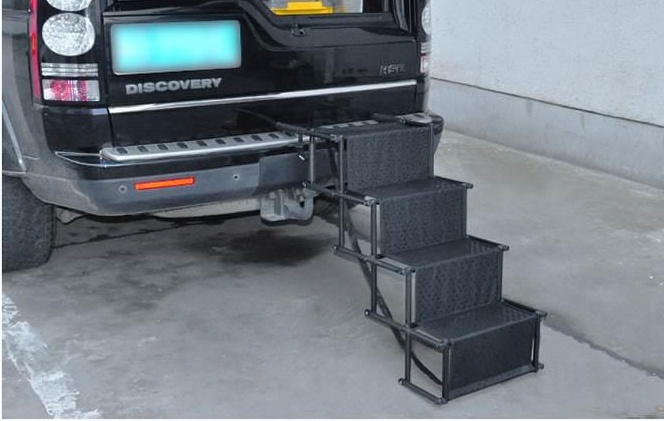
Dog stairs can develop conditions over time that make them hazardous:
Cracked, split or missing stair treads put dogs at risk of paws going through or lead to falls between the step gaps. Inspect regularly.
Exposed sharp hardware on the surface of the stairs can cut, scrape or puncture paw pads and legs. Hammer down or remove any protrusions.
Replace worn-out tread strips or grips that expose slippery plastic or metal underneath. Traction is critical to prevent slips.
Cracks in plastic or weak spots in wood that cause flexing need immediate repairs or replacement. Stability is compromised if stairs buckle or collapse.
Overloading stairs beyond weight limits risks bending or total collapse. Check your dog’s weight and the stairs limits before use.
Conduct thorough inspections and promptly address any damage, wear or defects. Don’t take chances.
How owners interact with the stairs also plays a role in potential accidents:
Dogs need to take the stairs slowly. Pushing dogs or letting them race upstairs risks dangerous tumbles. Enforce gradual stair use.
Carelessness attaching anchors or lack of checks for gaps/angle issues leaves room for problems. Stay focused on setup.
Having someone ready to assist the dog prevents falls. Dogs may misjudge a step or lose balance. Always use a spotter.
Dogs may stumble if stairs shift as they are on them. Securely anchor stairs to avoid any wobble or creep during use.
Dogs need positive reinforcement to build stair expertise. Skipping training risks bad habits and uncertainty leading to accidents.
Stay focused and cautious when setting up, stabilizing and overseeing stairs during your dog’s use. Don’t take shortcuts.
Here are key recommendations to ensure safe experiences with dog car stairs:
With vigilance and care taken each time your dog uses the stairs, the benefits can be immense with minimal risk. But never take their safety for granted. Prevention and preparation are key to many happy trips ahead.
Taking time to properly train your dog to use stairs is crucial for avoiding accidents. Here are key tips:
Begin with low-rise stairs indoors and let them explore and earn treats. This develops confidence.
Harnesses, leashes and spotters provide control and reassurance until they have experience.
Reward deliberate, one-step-at-a-time pace up and down. Rushing leads to missteps.
Get dogs accustomed to real-world factors, like people near the stairs, dropped items, and noises. Stay calm and reward focus.
Let the dog set the pace, don’t force interactions. Provide enthusiastic praise and treats for progress.
Taking it slow allows dogs to become truly confident and safe on stairs over time.
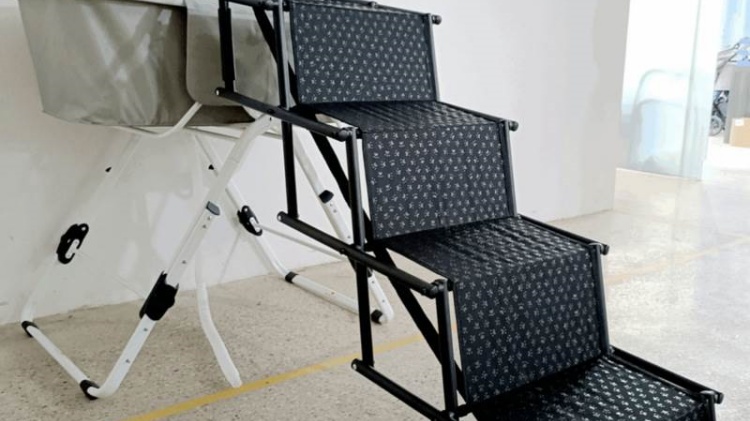
Stay alert for any indicators your dog may be struggling on the stairs:
If you notice any struggles, talk to your veterinarian right away about potential mobility issues or pain needing to be addressed.
In some cases, it becomes too risky for a dog to use stairs. Look for these signs. It’s time to stop:
Aging and injuries take a toll. Be ready to transition to alternate methods that are safer and more compassionate when needed.
When dog stairs become too difficult or hazardous, there are other more suitable options:
Gently sloped dog ramps allow access without stairs. These are great for elderly, injured or arthritic dogs.
For dogs who can’t manage any climbing, car lifts gently raise them up to the vehicle safely.
This specially designed harness lets you safely lift your dog without straining your back.
For dogs still able to handle some stairs, rubber stair treads provide traction and stability.
Dog parents can work with companies to design custom stairs or lifts to address unique mobility limitations.
With creativity and compassion, you can ensure your dog’s continued adventuring while prioritizing their safety and comfort.
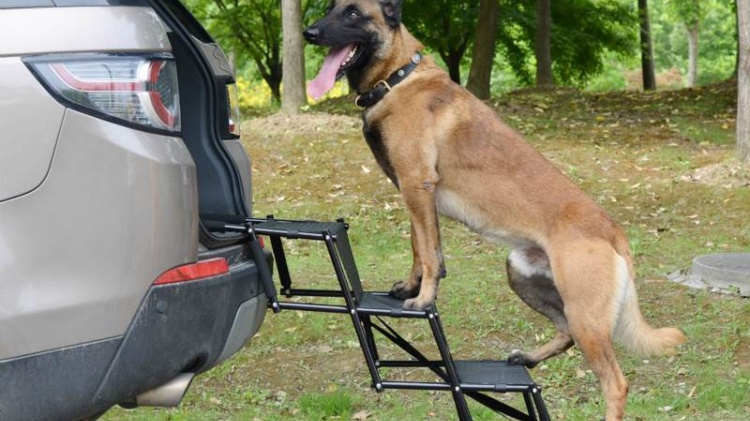
In conclusion, dog stairs for cars are a fantastic tool to enhance the safety and comfort of your pet during car rides. However, it’s crucial to be mindful of the common risks and mistakes associated with their use.
By carefully selecting the right type of stairs, ensuring proper setup and maintenance, and investing time in training your pet, you can create a positive and safe experience for your furry friend. Remember, the goal is to make car rides enjoyable and stress-free for both you and your pet.
By following the guidelines and best practices outlined in this guide, you’ll be well on your way to achieving just that. Safe travels!


Ensuring the safety and security of your dog while using stairs for cars is paramount. Just like humans, dogs can be prone to accidents and

Getting dogs in and out of vehicles easily and safely is a priority for pet owners. While you can purchase pre-made pet stairs or ramps,
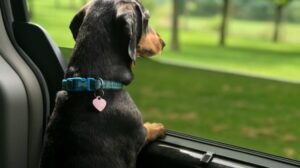
Training your dog to use stairs for cars is an essential aspect of ensuring their safety and comfort during car rides. Whether you have a

Getting pets in and out of vehicles can be challenging, especially for seniors, injured, or large dogs. Dog car stairs provide a simpler, safer solution

When it comes to ensuring the safety and comfort of your furry friend during car rides, dog stairs can be an invaluable tool. They provide

Ensuring the safety and security of your dog while using stairs for cars is paramount. Just like humans, dogs can be prone to accidents and
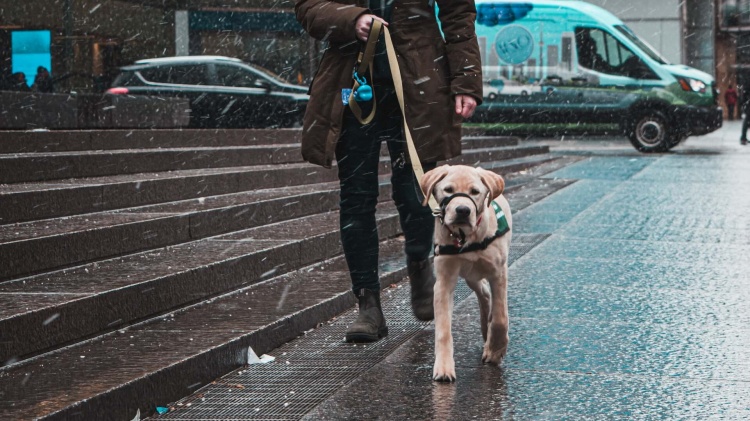
Getting dogs in and out of vehicles easily and safely is a priority for pet owners. While you can purchase pre-made pet stairs or ramps,

Training your dog to use stairs for cars is an essential aspect of ensuring their safety and comfort during car rides. Whether you have a
Copyright © 2024 petstepsdogstairs. All Rights Reserved.